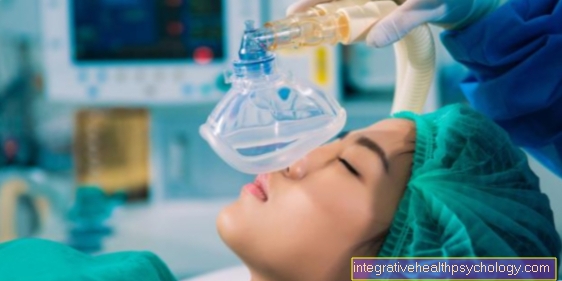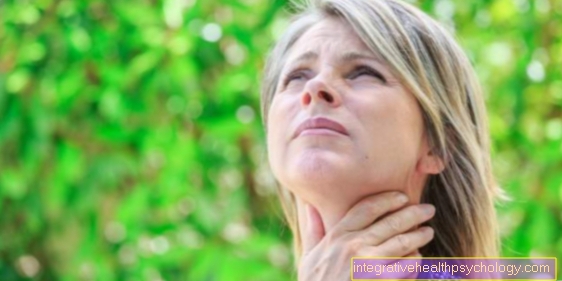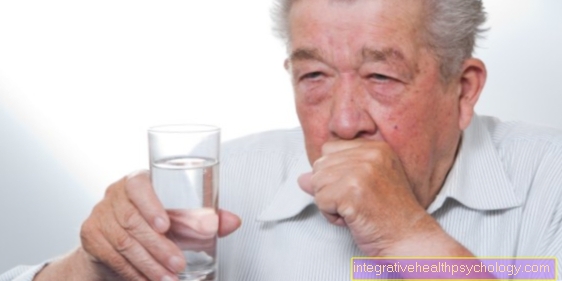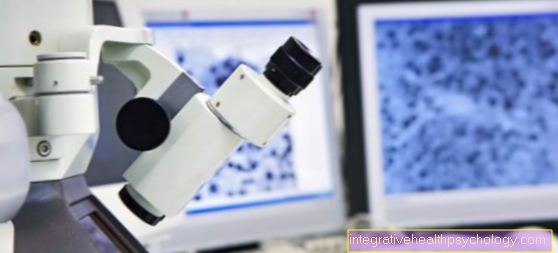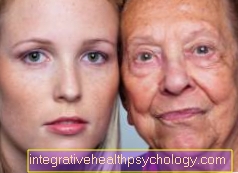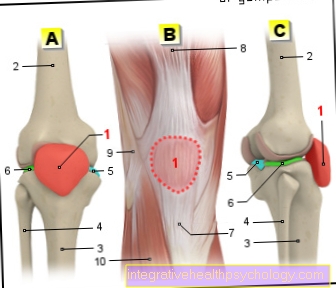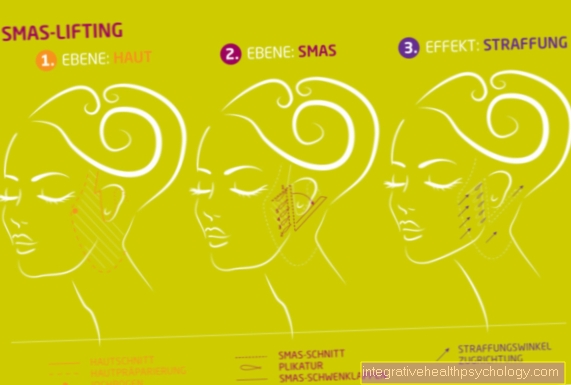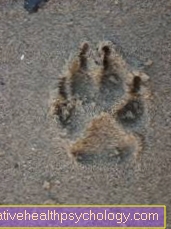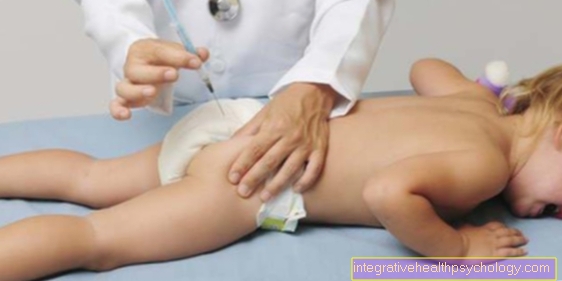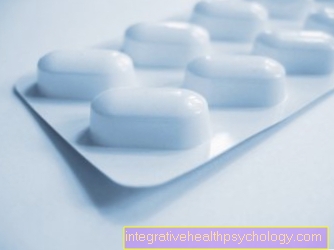Bleach skin
General and history
In history, pale, fair skin was considered a sign of wealth. Presumably, this is where the expression comes from: “to have an elegant paleness”. Powders and creams with light pigments were applied to help. Such pigments were, for example, white lead, which is extremely toxic. Avoiding the sun (under umbrellas) was also common. Such behavior was known, for example, from Europe, Japan, China and the Roman Empire.

The Skin lightening is used in Europe nowadays in the form of Creams, Pens i.a. used to Pigment spots, Moles, Irregularities the skin and the like to adapt to the overall complexion. Also covering Creams and pencils ("Camouflage") are used here. There are many in circulation illegal substances, which are used for skin lightening, from which one should definitely refrain! So found in Africa and Asia, for example Creams containing mercury, which, however, are extremely harmful to health are. Great care must be taken with products that are not distributed by official pharmacies. Under no circumstances should you use bleaching creams or ointments without first consulting a doctor.
In addition to bleaching the skin, bleaching of conspicuous hair, especially on the face, is currently in vogue. In particular, the women's beard is perceived by many women as a cosmetic flaw.
Active ingredients and drugs used

In Germany only the drug Pigmanorm is approved for skin lightening. It requires a prescription and contains the following active ingredients: hydroquinone, hydrocortisone and tetrinoin.
As a rule, the cream is used for no more than 3 weeks and only once a day. They are applied to the dark areas that are to be lightened.
As soon as a lightening occurs, the dose should be reduced. Pigmanorm Creme should not be applied over a large area. It is suspected that the active ingredients of the cream have mutagenic and carcinogenic properties. Therefore, the duration of use should be kept as short as possible and the treated skin area should only be as large as necessary.
Read more about bleaching agents for the skin here
Whiten skin with a cream
There is a cream that can be used for skin bleaching. This cream contains the three active ingredients: tretinoin, hydroquinone and hydrocortisone.
This combination of active ingredients is intended to prevent the pigment-forming cells of our skin (melanocytes) from producing their melanin. Melanin gives our skin a tan and is formed more often after exposure to the sun, for example. In addition, the hydrocortisone contained in the cream soothes inflammatory processes in the skin. Furthermore, the active ingredients should promote the renewal of the skin. Other active ingredients are not approved for bleaching the skin in Germany due to harmful side effects.
Bleach skin with hydrogen peroxide
Hydrogen peroxide is a very corrosive substance. If it comes into contact with the skin, a violent reaction occurs which creates oxygen. This makes the skin appear white. You might think that this would have a bleaching effect.
After a while, however, wounds that are accompanied by sharp pain become visible. The reactions of hydrogen peroxide with the skin are cytotoxic, which means nothing other than that the skin cells are killed. In no case is it advisable to use this harmful substance on your own skin.
costs
In Germany only one cream is currently approved for bleaching the skin, which contains the active ingredients tretinoin, hydroquinone and hydrocortisone. This cream requires a prescription, so it must be prescribed by a doctor.
15 grams currently cost around 20 euros, for 100 grams you pay around 140 euros. Unless otherwise directed by a doctor, the cream should be applied to the affected skin once a day for 7 weeks. How much of the cream you need and how much you ultimately spend on it depends on the size of the skin area to be treated.
Bleach skin with home remedies
There are several home remedies that can be used to try to bleach the skin and thereby make it appear lighter.
Kojic acid
Kojic acid, for example, is produced when rice is malted. This acid prevents the skin's melanocytes, the cells that make up the dark pigments in our skin, from doing just that. It is not yet clear whether this substance has carcinogenic properties, which is why it cannot be recommended.
lemonLemon is also offered in various forms for bleaching the skin, in the form of peelings or self-mixed creams and masks. Unfortunately, the acid that a lemon contains is very aggressive. That is always underestimated. Citric acid attacks the skin and dries it out. In the worst case, the acid will destroy the skin.
baking powder
Baking powder, on the other hand, is not an acid but has basic properties. Bases are also not healthy for the skin.
In fact, the protective film that the skin produces as a defense against external intruders (e.g. bacteria) also contains slightly acidic components. This protection of the skin would be destroyed with baking soda.
Without its barrier, the skin can no longer protect itself against bacteria and dehydration. This results in dry and cracked skin which germs can easily penetrate and lead to infections. Even if many home remedies give the impression of being harmless natural products, you should be very careful with acids and bases in particular.
The skin can become very irritated and it may end up with light, uneven spots or even scars. Anyone who really has problems with skin pigmentation disorders should consult a dermatologist.
Do you have a pigment disorder? - Then you might be interested in the following articles:
- Pigment Disorder - Causes and Treatment Options
- Remove pigment spots
Cryopeeling
Cryopeeling is a cosmetic procedure that is used to treat age pigmentation, liver spots, scars and age warts, among other things. The skin is treated with cold probes.
It is a very old process, but it is still used. It is used for small-area treatment and not for large-area skin lightening. The treatment leads to blistering of the skin. You shouldn't scratch these bubbles. The scales fall off on their own within 2 to 3 weeks. The skin is initially a little pink, but it quickly adapts to the normal skin color. It can take several sessions, depending on how thick the lesions are. As with almost all cosmetic skin treatments, scars and irregular discoloration of the skin can occur.
Laser treatment

Benign Pigment spots, Age spots and Tattoos can also use the modern Laser therapy effectively treated. The high-energy light penetrates through the skin and into the Pigment cells and is absorbed by them. In a very short time (fractions of a second!) Warmth.
This will make the Pigments destroyed and small Veins closed. This process does not stress the skin too much. The treatment is a little uncomfortable. Everyone Laser pulse feels like a little one Pinprick. The longer the treatment lasts, the more it becomes skin Naturally irritated. If the treatment is short, the skin just a little after the treatment reddened.
For longer treatments, for example at Tattoo removal, can also be bloody Vesicles which usually disappear after about 2 weeks. With small ones Pigment spots occurs Therapy success usually already after one treatment, large areas Tattoos however, require multiple sessions.
Tattoos often cannot be completely removed. There are certain Color additives, like for example Iron oxidethat cannot be removed by laser therapy. Some of them even darken. The result of the cosmetic treatment can be found here not satisfactory fail.
Pigment spots however, they can be brightened that way. Treatment can Side effects bring with them how Reddening of the skin or Swellingwhich, however, are temporary. Even smaller ones Bruising can occur.
In addition, the skin may temporarily be a little too light or too dark at the treated area. This decreased or increased pigmentation however, it mostly disappears on its own.
Very seldom occur with very dark skin minor burns and very sensitive skin can scar form. It is important to coat the skin sufficiently before and after the treatment save. The sun should be used at least 4 weeks before and 2 weeks after the treatment Avoided solarium become.
The treatment is usually used by the statutory health insurance not covered, Private health insurance companies clarify these cases individually with their insured persons.
Whiten skin in the genital area
Since the skin in the anal area and on the labia naturally has a somewhat stronger pigmentation and appears accordingly darker, some people feel the need to lighten these skin areas by bleaching them. Particular caution is required here!
The skin in the genital area consists partly of sensitive mucous membrane. In addition, there are many nerves and muscles close under the skin that control the sensation of pleasure and are also necessary for urine and stool control. It cannot be recommended to anyone in this sensitive area to experiment with agents that contain corrosive acids and bases!
There is an approved cream that can be prescribed by dermatologists for bleaching the skin. If you cannot make friends with the darker skin in your intimate area, you should definitely contact a dermatologist and get professional help here.
Anal whitening
By nature it is Intimate area many people something pigmented darker than the rest of the skin. Especially in the USA there is the possibility of a so-called "Anal whitening“To perform.
The skin is in these places, i.e. Anal- and Genital area, by bleaching substances matched to the color of the surrounding skin.
The substances that are used here are keratolytic agents such as Rutinol or Ascorbic acid. They are in the form of Creams and Lotions applied. The effect is based on the fact that the so-called Tyrosinase blocked becomes. That is an enzyme that works for the pigmentation the skin is responsible. As long as it blocked will remain Skin light.
After stopping the creams, the effect wears off after a few days and the skin becomes darker again. In the USA they are also still Hydroquinones used to lighten the skin. A harmful effect this is what is discussed, but its use is tolerated. The anal bleaching was more common in the beginning Adult industry its application, however, has now also established itself in other target groups. However, this practice takes place predominantly in the USA.
Scars after bleaching
Anyone who experiments with various products for bleaching the skin must expect that the mostly aggressive substances will damage the skin. Everywhere where skin is injured, scars can develop as part of the healing process. Once scars have developed, it is unfortunately difficult to treat them with therapy. It is therefore very important that if you want to lighten your skin, seek professional help from a dermatologist.
Got a scar from bleaching your skin? - Then the following article could help you: Scar care
Other skin-lightening cosmetics
A variety of providers of cosmetic products also offers skin lightening creams and Soap on. These are does not require a prescription. They contain herbal active ingredients and are freely available.
However, this must be distinguished from this illegal productswhich for example Hydroquinone contain.Hydroquinone must be prescribed by doctors. Until recently, products containing hydroquinone were often found in so-called “Afro shops”. However, these are confiscated and traders have to pay fines.


